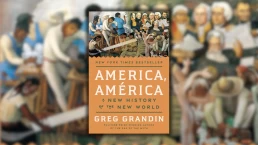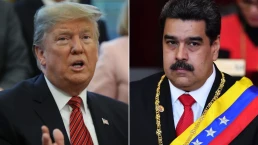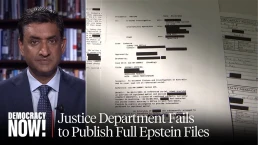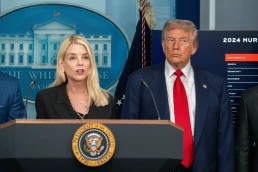Then (the New World) and Now (Israel)
By Greg Grandin, Tom Dispatch
Leon Golub once related a story to a mutual friend. A Chicago artist famous for large canvases depicting crimson torture rooms in Central America, Golub had been asked what it meant to him to be a “Jewish political artist.” The painter’s quick reply was that he wasn’t a “Jewish political artist,” he was just a “political artist.” In the end, though, Golub came to believe that he had let himself off too easily, that his answer was too pat. Yes, he was a political artist. His paintings had focused not just on Latin America but on war-torn Vietnam and racism in the United States and South Africa. But he had consciously avoided Israel’s occupation of the West Bank and Gaza.

Golub admitted that what it meant for him to be a successful artist was never to take the “horrors inflicted on Palestinians” as his subject matter. Only then would he be left free to paint his political opinions on anything else.
Over the last year and a half, I’ve thought of Leon Golub, who died in 2004, many times as the escalation of Israel’s assault on Gaza and settler violence on the West Bank paralleled my own rush to finish a book (just published as America, América: A New History of the New World). Among other things, it traces Latin America’s largely unrecognized role in the abolition of the doctrine of conquest and the creation, after World War II, of the liberal international order, including the founding of the International Court of Justice (today considering South Africa’s case that Israel is committing genocide in Gaza).
I’ve been writing critically on how the U.S. acted in Latin America for more than three decades. Unlike many scholars and students of the Middle East, I was able to do so and not be punished because, like Golub, I mostly focused on the “horrors inflicted” on people other than Palestinians. As President Richard Nixon put it all too accurately in 1971, nobody of import in the United States gives “one damn about Latin America.”
Recent Posts
The “President Of Peace” Prepares For War
December 23, 2025
Take Action Now The Donroe Doctrine Hits HomeBy William D. Hartung, Tom Dispatch Earlier this month, the Trump administration released its new…
“Who Are They Protecting?”: Rep. Ro Khanna Urges Contempt Charges Over AG Bondi’s Epstein Redactions
December 22, 2025
Take Action Now “The House can act unilaterally on contempt, and this will be introduced by Thomas Massie. What the resolution will say is that…
Dems Demand Answers as Trump Photo Disappears From DOJ Online Epstein Files
December 21, 2025
Take Action Now “What else is being covered up?”By Brett Wilkins, Common Dreams Congressional Democrats on Saturday pressed US Attorney General…
Elon Musk Is Vowing Utopia Driven by AI and Robotics. Bernie Sanders Has a Few Questions
December 20, 2025
Take Action Now “I look forward to hearing about how you and your other oligarch friends are going to provide working people with a magnificent life…




